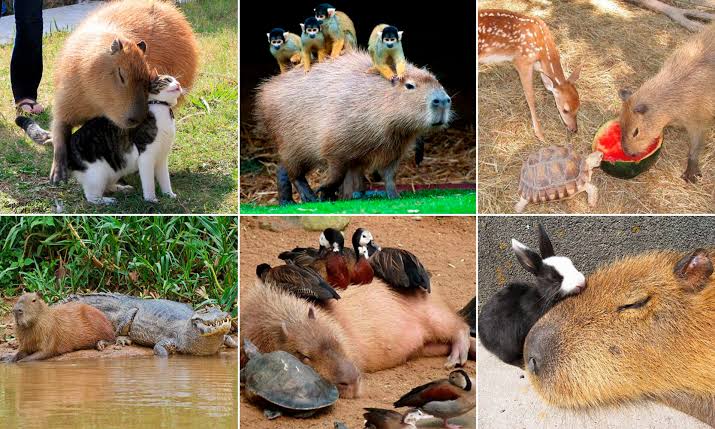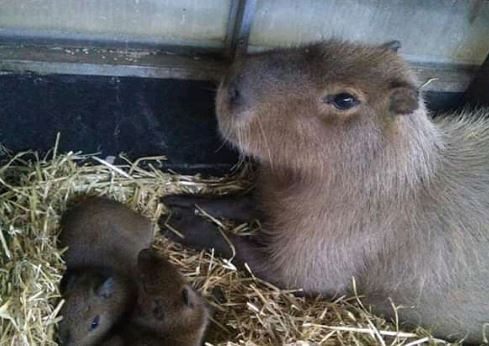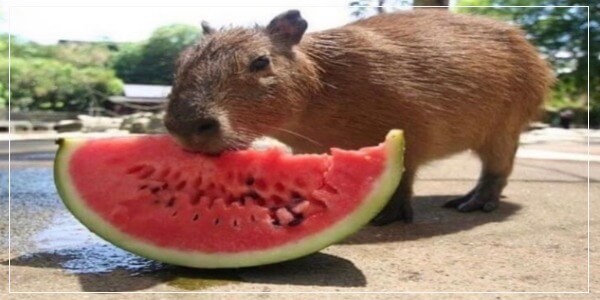Capybara Life Span
Capybaras are fascinating and unique animals that have captured the attention of people worldwide. They are the largest rodents in the world, and their physical features, behavior, and social dynamics have made them a popular subject of scientific research and a beloved attraction for visitors at zoos and wildlife parks. One of the most commonly asked questions about capybaras is about their lifespan and how long they can live in the wild or captivity.
Capybaras are native to South America and are found in a variety of habitats, including forests, grasslands, and wetlands. They are semi-aquatic animals and are often seen lounging in the water, where they can stay cool and avoid predators. They are social animals and live in groups, known as herds, consisting of several females, their offspring, and a dominant male.
The lifespan of capybaras varies depending on a number of factors, including their environment, diet, and genetics. Generally, wild capybaras have a shorter lifespan than those living in captivity due to various environmental factors, including predation, disease, and competition for resources. In the wild, capybaras can live for up to 8-10 years on average. However, in captivity, where they are provided with a safe and secure environment, as well as proper nutrition and veterinary care, capybaras can live much longer.
The lifespan of captive capybaras can vary depending on the quality of care they receive, but it is not uncommon for them to live for up to 12-15 years, and some have even been known to live up to 20 years. This is because they are protected from predators, have access to a consistent and nutritious diet, and receive prompt medical attention if they become ill or injured.
capybaras have a fascinating lifespan that can vary depending on their environment and living conditions. While wild capybaras typically live up to 8-10 years, captive capybaras can live much longer, with some living up to 20 years or more. Understanding the factors that contribute to their lifespan can help us better care for these amazing animals and ensure their survival in the wild and in captivity.
Capybara Life Span Factors
The Capybara (Hydrochoerus hydrochaeris) is the largest rodent in the world and is native to South America. They are semi-aquatic animals that inhabit freshwater environments, such as rivers, lakes, and swamps. Capybaras are social animals and are usually found living in groups, ranging from 10 to 20 individuals.
The average lifespan of Capybaras in the wild is around 8 to 10 years. However, Capybaras living in captivity tend to live longer, with an average lifespan of 12 to 14 years. There have been reports of Capybaras living up to 20 years in captivity.
Several factors can affect the lifespan of Capybaras. Habitat is an essential factor. In their natural habitat, Capybaras are at risk of predation from predators like jaguars, anacondas, and caimans, which can significantly impact their lifespan. In contrast, Capybaras living in protected areas or zoos tend to have a more extended lifespan since they are protected from predators.
Diet is another important factor that can affect Capybara’s lifespan. They are herbivores and mainly feed on grasses and aquatic vegetation. Capybaras living in the wild have to compete for food with other animals, which can lead to malnutrition and a shortened lifespan. However, in captivity, they are fed a well-balanced diet, which helps to ensure that they receive all the necessary nutrients.
Disease is also a significant factor that can affect Capybara’s lifespan. In the wild, Capybaras can contract various diseases from other animals, including ticks, fleas, and mosquitoes, which can lead to illnesses and a shortened lifespan. However, Capybaras living in captivity are regularly checked for diseases and are provided with medical treatment when necessary.
The lifespan of Capybaras can vary depending on various factors, such as habitat, diet, disease, and predation. While Capybaras living in the wild have a shorter lifespan, those living in captivity tend to live longer due to the protection they receive from predators, a well-balanced diet, and regular medical attention.
Aging In Capybaras
Like all animals, they experience a variety of physical and behavioral changes as they age. We will explore the aging process in capybaras, including changes in their fur color, size, mobility, reproduction, social behavior, and communication.
Physical Changes:
As capybaras age, they undergo several physical changes. One of the most noticeable changes is in their fur color. Juvenile capybaras have a lighter-colored fur coat than adults, which is usually a reddish-brown color. As they age, their fur darkens, becoming a more solid brown color. In addition, capybaras may experience changes in their size as they grow older. While some individuals may continue to grow throughout their life, others may reach their maximum size in early adulthood.
Mobility:
Capybaras are generally very mobile animals, but their mobility may decrease as they age. Older capybaras may become less active, spending more time resting or sleeping. They may also have more difficulty navigating rough or uneven terrain, and may not be able to run or swim as fast as they could when they were younger.
Reproduction:
Like many animals, capybaras have a finite reproductive period. Females reach sexual maturity at around 18 months of age and can continue to reproduce until they are about 7 years old. However, after this age, their fertility declines, and they may have fewer successful pregnancies. Males also experience a decline in fertility as they age, and may become less successful in competing for mates.
Social Behaviour:
Capybaras are highly social animals, and their social behavior may change as they age. Older individuals may become less interested in interacting with younger capybaras, and may spend more time with individuals of similar age. They may also become more dominant within their social groups, as they have more experience and knowledge about the environment.
Communication:
Capybaras communicate with each other through a variety of vocalizations, body language, and scent marking. As they age, their communication may change. For example, older capybaras may use different vocalizations to communicate and may rely more on scent marking to establish their territory.
Aging in capybaras is characterized by a variety of physical and behavioral changes. These changes include alterations in fur color, size, mobility, reproduction, social behavior, and communication. While these changes may be subtle, they are an important part of the aging process in capybaras and play a crucial role in their survival in the wild.
Capybara Mortality Rates
Capybaras, face a variety of mortality risks throughout their life cycle. These risks can be divided into two broad categories: natural causes and human-related causes.
Natural Causes:
Predation is a significant threat to capybaras, particularly to juveniles. Jaguars, anacondas, and caimans are some of the predators that capybaras have to contend with. In addition, capybaras are also vulnerable to diseases, such as leptospirosis, which is transmitted through contaminated water. Accidents, such as drowning or being hit by vehicles, can also lead to capybara mortality, especially in areas where they coexist with human activities.
Human-related causes:
Hunting is one of the most significant threats to capybaras. In some South American countries, capybaras are hunted for their meat, which is considered a delicacy. Habitat loss and fragmentation are also major concerns for capybaras, as they depend on freshwater habitats such as rivers and wetlands. Deforestation, urbanization, and agricultural expansion can lead to the loss or degradation of these habitats, affecting capybara populations. Pollution from agricultural chemicals, oil spills, and mining can also harm capybaras, affecting their health and overall survival.
The mortality rate of capybaras can vary depending on the population and geographic location. For instance, in some areas where hunting is not as prevalent and habitat quality is suitable, capybara populations can thrive. In other areas, where hunting and habitat loss are prevalent, capybara populations can experience significant declines. In general, capybara populations are considered to be stable and not at risk of extinction. However, the continued pressure of human activities, particularly hunting and habitat loss, can have a significant impact on capybara populations and their long-term survival.
Capybaras face various mortality risks throughout their life cycle, including natural causes such as predation, disease, and accidents, as well as human-related causes such as hunting, habitat loss, and pollution. It is essential to monitor and manage these risks to ensure the long-term survival of capybara populations.
Capybara Life Cycle
Here’s a description of the different stages of a capybara’s life cycle:
Birth and infancy: Capybara babies, called pups, are born fully furred and with their eyes open. They are also able to walk and swim within hours of being born. Pups rely on their mothers for milk and protection for the first few months of their life. As they grow, they start to explore their environment and learn how to interact with other members of their group.
Adolescence: As capybaras reach adolescence, they become more independent and start to assert their dominance within their social group. Adolescent capybaras will also begin to explore their environment further and start to learn the best places to find food and water.
Maturity: Capybaras reach maturity at around two years of age. At this stage, they are fully grown and have established their place in their social group. They are also able to mate and reproduce. Mating season for capybaras typically occurs during the rainy season, which is when food and water are most abundant.
Senescence: Capybaras can live up to 8-10 years in the wild. As they reach old age, they may become less active and spend more time resting. They may also start to experience health issues and become more vulnerable to predators.
Throughout their life cycle, capybaras adapt to their changing needs and environment. During the early stages of life, they rely on their mothers for protection and nourishment. As they grow older, they become more independent and start to explore their environment. Capybaras also have to adapt to changes in their environment, such as seasonal changes in food and water availability. In order to survive, capybaras must be able to adapt to these changes and find new sources of food and water as needed.
Capybara Conservation
Capybaras are an important part of South American ecosystems and play a critical role in maintaining wetlands and riparian habitats. However, the species is facing several conservation challenges that threaten their populations.
Threatened status:
Capybaras are not currently listed as a threatened species, but their populations are declining in some areas due to habitat loss and fragmentation. This is due to agricultural expansion, urbanization, and dam construction that alters river flow and creates new barriers to their movement. In addition, overhunting is a concern in some areas where capybaras are hunted for their meat and fur.
Habitat fragmentation:
Habitat fragmentation can lead to the isolation of capybara populations, reducing their genetic diversity and increasing the risk of inbreeding. This can also make them more vulnerable to predation, disease, and environmental changes. To address this issue, conservationists are working to connect fragmented habitats and create wildlife corridors to allow for movement and gene flow between populations.
Human-capybara conflicts:
As humans expand their activities into capybara habitats, conflicts can arise. Capybaras may compete with livestock for food, cause damage to crops, and be involved in traffic accidents. In response, some people may try to kill or relocate capybaras, which can harm their populations. To mitigate these conflicts, conservationists are working with local communities to promote coexistence and develop strategies to reduce human-capybara conflicts.
Measures to protect and manage capybara populations:
To protect and manage capybara populations, conservationists are implementing a range of measures. These include:
Habitat conservation: protecting and restoring wetland and riparian habitats, creating wildlife corridors, and promoting sustainable land use practices that minimize habitat loss and fragmentation.
Behavior modification: promoting responsible ecotourism practices that do not disrupt capybara behavior, such as feeding or approaching them too closely.
Genetics management: monitoring genetic diversity, implementing breeding programs, and minimizing inbreeding through the creation of gene flow corridors.
Is it Safe To Leave A Capybara Alone With A Baby? -[Answered]
Community education: raising awareness of the ecological importance of capybaras, promoting sustainable and coexisting practices that minimize human-capybara conflicts, and providing economic incentives for the conservation of capybara habitats and populations.
So, capybaras are facing multiple conservation challenges that require urgent attention to ensure their survival. To protect and manage capybara populations, conservationists are working on habitat conservation, behavior modification, genetics management, and community education. These efforts are essential to safeguard capybara populations and their critical role in maintaining South American ecosystems.
Conclusion
Capybaras are fascinating creatures that have captured the attention and curiosity of many. They are the largest rodents in the world and have a unique social structure that makes them a joy to observe in the wild. While they face various challenges in their habitats, including habitat loss, fragmentation, and human conflicts, capybaras have adapted and thrived in diverse environments across South America. With a lifespan of up to 8-10 years in the wild, capybaras offer many opportunities to observe their life cycle, behavior, and adaptations over time. Whether you are an animal enthusiast or simply curious about the natural world, capybaras are a species worth learning about, appreciating, and protecting for future generations.


![Capybara Meat And Its Culinary Uses - [Every You Should Know] Capybara Meat & Culinary Uses](https://capybaratips.com/wp-content/uploads/2023/03/Capybara-meat-250x200.webp)
![Why Do Capybaras Not Have Tails? - [Answered] Why Do Capybaras Not Have Tails](https://capybaratips.com/wp-content/uploads/2023/03/Capy-Tail-250x200.webp)



![How Big Should a Capybara Enclosure Be? - [Sizes & Design] How Big Should a Capybara Enclosure Be](https://capybaratips.com/wp-content/uploads/2023/03/Capy-Enclosure-250x200.webp)

